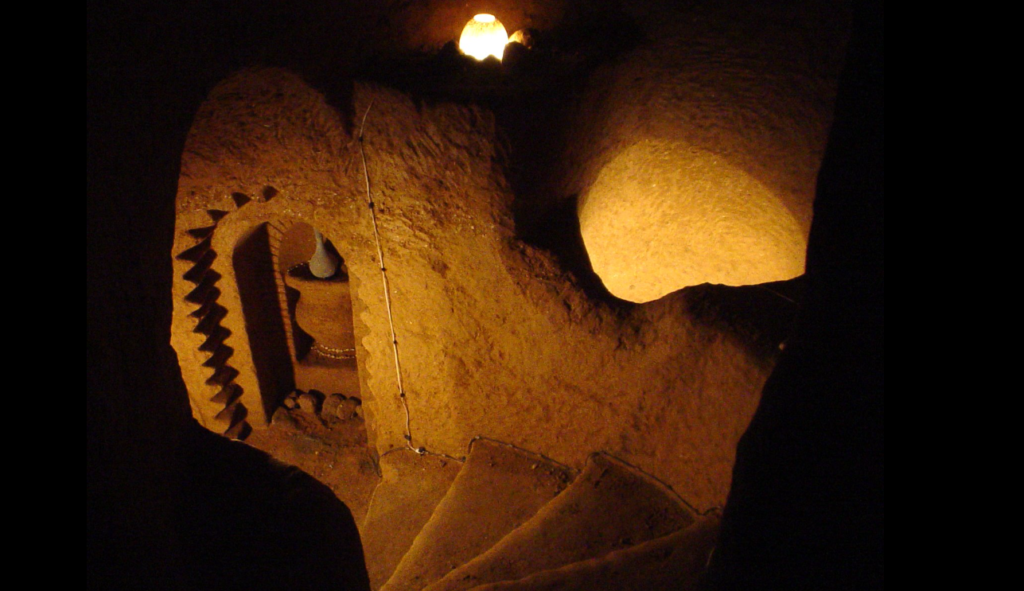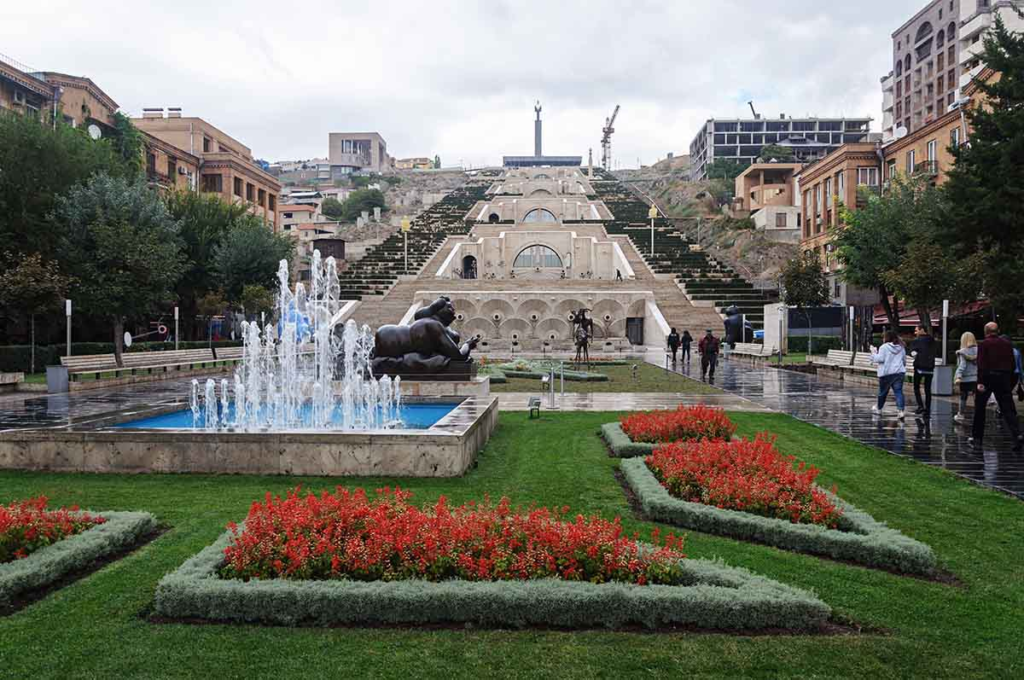At the end of my last post I was in Akhaltsikhe, Georgia, and heading to Armenia. Here’s my plan for my four days there.
About Armenia
Few nations have histories as ancient, complex and laced with tragedy as Armenia. And even fewer have a culture that is as rich and resilient.
Lonely Planet Georgia, Armenia & Azerbaijan
Armenian History
For a period in the first century BCE, Armenia was the most powerful kingdom east of the Roman republic. In 301 CE Christianity became Armenia’s official state religion. Armenia was thus the first Christian state in the world. The kingdom of Armenia fell to the Sasanian empire in 428, and from then until today, Armenia has enjoyed intermittent periods of independence and conquest.
In the 19th century Imperial Russia took control of Eastern Armenia, while Western Armenia was part of the Ottoman Empire. Although the Ottomans allowed relative autonomy, Armenians faced serious discrimination. Between 1894 and 1896, state-sponsored massacres led to the deaths of between 100,000 and 300,000 Armenians.
With the outbreak of World War I, the Ottomans, on the verge of collapse, went to war against Russia. Between 1915 and 1917, more than a million Armenians died, either in state-sponsored mass killings or in death marches. Turkey, while acknowledging the tragedy, has as yet refused to acknowledge these deaths as genocide.
Turkey does not deny the suffering of Armenians, including the loss of many innocent lives, during the First World War. However, greater numbers of Turks died or were killed in the years leading to and during the War. Without belittling the tragic consequences for any group, Turkey objects to the one-sided presentation of this tragedy as a genocide by one group against another.
The Events of 1915
After a brief stint as an independent republic, Armenia, along with Georgia and Azerbaijan, was annexed by the Soviet Union in 1922. For fifteen years the three countries were, together, the Transcaucasian Socialist Federative Soviet Republic, but in 1936 each became a separate Soviet Socialist Republic.
For Armenia, being part of the Soviet Union was something of an improvement over life during the waning years of the Ottoman Empire. Population growth between 1922 and 1989 was about 330%. The 1980s saw some changes stemming from Gorbachev’s Glasnost and Perestroika. But tensions with Azerbaijan and a catastrophic earthquake in 1988 created challenges.
Starting in May 1990, clashes broke out between Armenian militia and Soviet Internal Security Forces. At the same time, 200,000 Armenians living in Baku, the capital of Azerbaijan, were forced to flee organized pogroms being carried out in that city.
Armenia declared independent statehood on September 21, 1991.
Armenia Today
The early years of independence were marred by war with Azerbaijan in the Nagorno-Karabakh enclave. A Russian-brokered ceasefire ended the conflict in 1994, but both countries’ economies have suffered in the absence of a complete resolution. A second war broke out in September 2020 and a ceasefire was again negotiated by Russia.
The ongoing tensions with two of its neighbors, Azerbaijan and Turkey, are mitigated by cordial relations with its other two neighbors, Georgia and Iran. Turkey and Armenia have taken some steps toward the normalization of relations.
In 2018 a “velvet revolution,” involving protests and marches but no violence, brought about a new constitution and various reforms. The leader of the revolution was elected Prime Minister in 2018.
Protests erupted again earlier this year, but failed to gain popular support.
Armenia’s population since 1991 has declined by more than 10% as chronic high unemployment has driven many younger Armenians to seek opportunities elsewhere. Today fewer than three million people live in Armenia; eight million Armenians live outside the country’s borders.
Yerevan
The city that is Armenia’s modern capital was founded in 782 BCE, making it one of the oldest continuously inhabited cities in the world. It has been the nation’s capital since 1918.
With a population of 1.4 million, nearly half of Armenia’s residents live in the Yerevan metropolitan area. It is the center of the country’s political, cultural, and economic life.
The city’s rapid growth in the last hundred years means that little of its history remains intact. Between Soviet-era buildings and modern structures, not much is left of Yerevan’s more distant past.
I’ll be spending four nights at Hotel Fourteen Floor. I’ll have a “Deluxe Room with Terrace,” and given the name of the hotel, I hope to have a nice view.
My Armenia Itinerary
I am counting days based on the entire trip, so my first day in Armenia is…
Day 31
The drive from Akhaltsikhe to Yerevan is 284 km (about 176 miles). Along the way we pass through Gyumri, Armenia’s second largest city, and we’ll stop there for a look around. Gyumri has a plethora of historic buildings and monuments, and a distinctive historic district. We’ll also stop at Dashtadem Fortress, dating from the 10th century but with sections built as recently as the 19th.
Once I arrive and settle in at my hotel, I’ll have the rest of the day free.
Day 32
The only activity on today’s agenda is a three-hour walking tour of Yerevan. Here are some of the sights on the tour:

In addition, an “old town” does supposedly exist in Yerevan, and this tour promises to take me there.
With most of the day free, I should have plenty of time to strike out on my own and see more than is on the tour. The History Museum of Armenia, with what Lonely Planet says is a “simply extraordinary collection of Bronze Age artefacts,” is definitely on my list. And on the top floors of the museum is the National Gallery.
Here are some of the other museums, galleries, and monuments I’ll be hoping to see:
- Cafesjian Center for the Arts
- Armenian Genocide Memorial & Museum
- Matenadaran — a manuscript library and museum
- Sergei Parajanov Museum — a museum dedicated to the work of Sergei Parajanov, a Soviet director, screenwriter, and artist of Armenian descent who is widely considered to be one of the most influential filmmakers in cinema history
I’m sure I won’t make it to all these museums, but if time and energy allow, I’ll do my best.
Day 33
Today I have a 6–7 hour private tour to several destinations:



All Tosya Arakelyan wanted was for her husband Levon to build her a potato cellar. What she got in return was an extremely intricate seven-level underground cave network built over 23 years with only simple tools. Levon died in 2008, after which the caves were opened to the public.
Day 34
I’ll have another private tour today, also about 7 hours.



Day 35
My flight back to Istanbul leaves from Zvarnots International Airport at 6:30 am, so I expect to get minimal sleep. And my flight back to Mexico doesn’t leave from Istanbul Airport until the early morning of Day 36, so you have to go back to my earlier post about the Turkey portion of my itinerary to find out about the rest of Day 35.







Leave a Reply